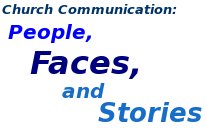

CHURCH COMMUNICATION: PEOPLE, FACES, AND STORIES
Is it possible for a Church communications office to transmit the vitality of the faith and to overcome a purely institutional vision of the Church? Can the meaning of Catholic doctrine and the Ten Commandments be conveyed today, not as a series of rules to be complied with, but as the way toward happiness and personal growth? Is it permissible for a Church communicator to go beyond the task of producing press releases in order to spread information that makes the living voice of Christians heard in the media?
The faith has a personal dimension which constitutes a driving force in this age of global communications. Within the apparent anonymity favored by digital processes, in which contacts continue to multiply, but interpersonal relationships are rarely deepened, first-person accounts of lived experiences continue to be the most effective instrument for transmitting the faith.
In day-to-day news, every dimension of the person can be involved, and in current events -- from the most ordinary stories to official papal trips -- the media are constantly dealing with love, religiosity, good and evil, with almost everything that counts in peoples' lives. The media landscape of the 21st century presents us with particularly fertile ground for telling the personal stories, deeds, and even biographies of Church protagonists, whether they be laity, high-ranking ecclesial officials, ordinary priests, or public personalities.
As Benedict XVI affirmed, “the Gospel demands to be incarnated in the real world and linked to the real faces of our brothers and sisters, those with whom we share our daily lives. Direct human relations always remain fundamental for the transmission of the faith!” At the same time, “the proclamation of the Gospel requires a communication which is at once respectful and sensitive, which stimulates the heart and moves the conscience; one which reflects the example of the risen Jesus when he joined the disciples on the way to Emmaus (cf. Lk 24:13-35). By his approach to them, his dialogue with them, his way of gently drawing forth what was in their heart, they were led gradually to an understanding of the mystery” (World Communications Day, 24.I.2011). For this reason, in order to transmit the vitality of the faith in a world where distances have been shortened, and everything has become visual, interactive, and set in real time, whoever works in an office for Church Communications must know how to respond to the need for faces and stories.
The 8th Professional Seminar on Church Communication Offices aims to create a space to reflect upon these themes, calling together leading experts in the field, in order to compare their experience with that of professionals in Church communications from around the world.